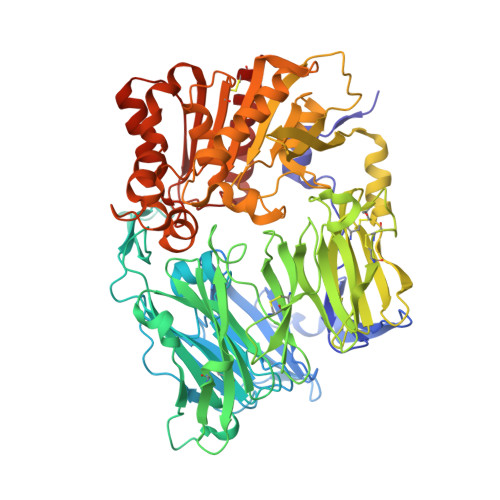Scaffold-hopping from xanthines to tricyclic guanines: A case study of dipeptidyl peptidase 4 (DPP4) inhibitors.
Pissarnitski, D.A., Zhao, Z., Cole, D., Wu, W.L., Domalski, M., Clader, J.W., Scapin, G., Voigt, J., Soriano, A., Kelly, T., Powles, M.A., Yao, Z., Burnett, D.A.(2016) Bioorg Med Chem 24: 5534-5545
- PubMed: 27670099
- DOI: https://doi.org/10.1016/j.bmc.2016.09.007
- Primary Citation of Related Structures:
5T4B, 5T4E, 5T4F, 5T4H - PubMed Abstract:
Molecular modeling of unbound tricyclic guanine scaffolds indicated that they can serve as effective bioisosteric replacements of xanthines. This notion was further confirmed by a combination of X-ray crystallography and SAR studies, indicating that tricyclic guanine DPP4 inhibitors mimic the binding mode of xanthine inhibitors, exemplified by linagliptin. Realization of the bioisosteric relationship between these scaffolds potentially will lead to a wider application of cyclic guanines as xanthine replacements in drug discovery programs for a variety of biological targets. Newly designed DPP4 inhibitors achieved sub-nanomolar potency range and demonstrated oral activity in vivo in mouse glucose tolerance test.
Organizational Affiliation:
Department of Medicinal Chemistry, Merck Research Laboratories, 2000 Galloping Hill Rd., Kenilworth, NJ 07033, United States.


















